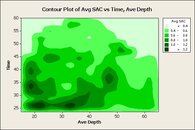miketsp
Contributor
The problem with correlation is that you have to look at what you're correlating.
I just had a quick look through the electronic log of my last 196 dives and what I found was that most of my deeper dives actually tend to be warm-water dives and when warm-water diving I get a lot colder than when cold-water diving.
Cold water diving I wear a 7mm semi-dry and warm water I wear a 3mm shorty or full.
So in fact it is true to say that I'm normally a lot colder on my deeper dives and I've definitely noticed that when I'm cold my SAC increases. On deep dives with my semi-dry there is no SAC impact compared to a shallow dive.
So when I bring body temperature into the equation I find that this clearly overrides any depth effect on SAC.
I just had a quick look through the electronic log of my last 196 dives and what I found was that most of my deeper dives actually tend to be warm-water dives and when warm-water diving I get a lot colder than when cold-water diving.
Cold water diving I wear a 7mm semi-dry and warm water I wear a 3mm shorty or full.
So in fact it is true to say that I'm normally a lot colder on my deeper dives and I've definitely noticed that when I'm cold my SAC increases. On deep dives with my semi-dry there is no SAC impact compared to a shallow dive.
So when I bring body temperature into the equation I find that this clearly overrides any depth effect on SAC.





